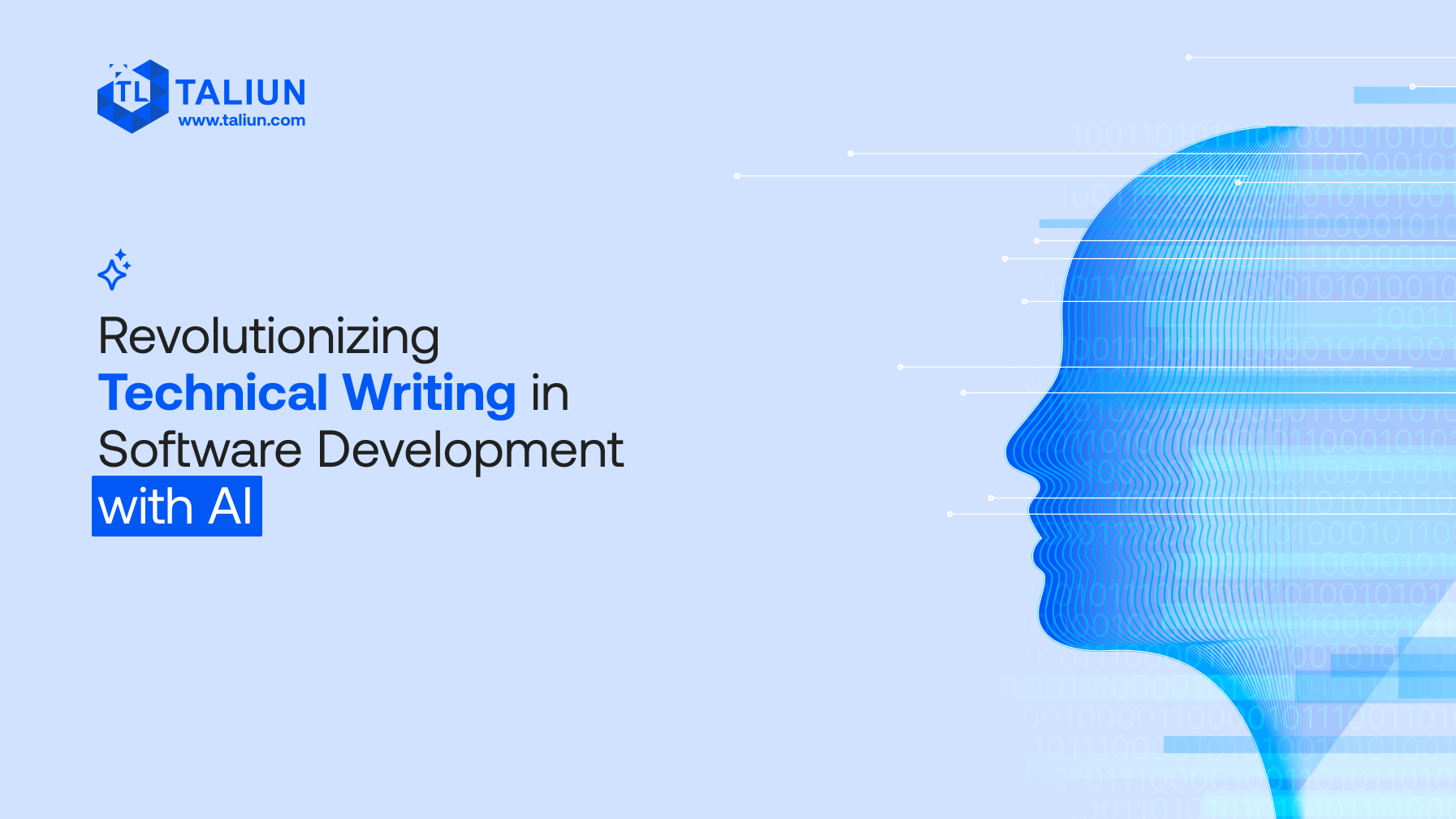Revolutionizing Technical Writing in Software Development with AI

In the rapidly evolving world of software product development, technical writing plays a critical role in bridging the gap between complex software functionalities and user comprehension. As we advance further into the digital age, Artificial Intelligence (AI) has emerged as a pivotal tool in streamlining and enhancing technical writing processes, significantly impacting the Software Product Development Lifecycle (SPDLC). This blog delves into the transformative power of AI in fast-tracking technical writing, highlighting its benefits, applications, and future potential within the SPDLC framework.
The Crucial Role of Technical Writing in SPDLC
Technical writing in the context of software development encompasses the creation of documentation that helps users understand and utilize software products effectively. This includes user manuals, help files, technical specifications, API documentation, and more. Given the intricacy of modern software, clear and concise documentation is indispensable for both end-users and developers navigating the SPDLC—from conception through deployment and maintenance.
The Advent of AI in Technical Writing
AI's integration into technical writing marks a significant leap forward, offering tools and technologies that automate mundane tasks, enhance accuracy, and tailor content to specific audiences. AI-driven solutions can analyze complex software solutions and generate preliminary drafts of documentation, which can then be refined by human experts. This synergy between AI capabilities and human expertise accelerates the documentation process, reduces errors, and improves overall quality.
Automating Routine Tasks
One of the most immediate benefits of AI in technical writing is the automation of repetitive and time-consuming tasks. AI algorithms can auto-generate documentation for code, update content in real-time as developers make changes, and ensure consistency across multiple documents. This automation allows technical writers to focus on more strategic aspects of documentation, such as improving user engagement and making technical content more accessible to non-technical users.
Enhancing Content Quality
AI tools are equipped with natural language processing (NLP) capabilities, enabling them to understand and generate human-like text. This technology can be leveraged to ensure that technical documentation is clear, concise, and free of jargon, making it more understandable to its intended audience. Additionally, AI can analyze user feedback and usage patterns to suggest improvements to documentation, ensuring that content remains relevant and useful over time.
Personalizing User Experience
Personalization is becoming increasingly important in technical documentation. AI can tailor documentation to meet the specific needs of different user segments, providing personalized tutorials, FAQs, and troubleshooting guides based on the user's behavior, preferences, and skill level. This targeted approach not only enhances user satisfaction but also reduces the learning curve associated with new software products.
Streamlining Localization Processes
As software products reach global markets, the need for documentation in multiple languages grows. AI-powered translation and localization tools can expedite this process, ensuring that technical documentation is accurately translated and culturally adapted for international audiences. This rapid localization process supports faster global deployment of software products and enhances user experience across different regions.
Predictive Analytics and Continuous Improvement
AI's predictive analytics capabilities enable the identification of trends and patterns in how users interact with documentation. By analyzing data on which sections of documentation are most accessed or where users encounter difficulties, AI can inform continuous improvement strategies, helping technical writers prioritize updates and focus on areas that will provide the most significant benefit to users.
The Future of AI in Technical Writing
The potential of AI in transforming technical writing within the SPDLC is vast. Future advancements in AI and machine learning algorithms will further refine the automation of documentation processes, improve the accuracy of content generation, and offer even more personalized user experiences. As AI technology evolves, we can anticipate more intuitive documentation tools that not only respond to user inquiries in real-time but also predict information needs before they arise, seamlessly integrating into the user's workflow.
Moreover, the integration of AI in technical writing opens new avenues for augmented reality (AR) and virtual reality (VR) documentation, offering immersive and interactive ways for users to engage with software products. This evolution will redefine user documentation, moving beyond static text to dynamic, interactive learning experiences.
Embracing AI in Technical Writing
The integration of AI into technical writing within the SPDLC represents a paradigm shift, offering unprecedented opportunities to enhance efficiency, quality, and user engagement. To fully leverage AI's potential, organizations must invest in training their technical writing teams on AI tools and technologies and foster a culture of innovation and continuous improvement.
In conclusion, AI is not just a tool but a transformative force in technical writing for software development, heralding a new era of efficiency and user-centric documentation. By embracing AI, software developers and technical writers can collaborate more effectively, delivering superior products and documentation that meet the evolving needs of users in the digital age.




